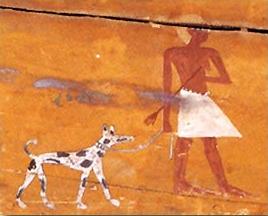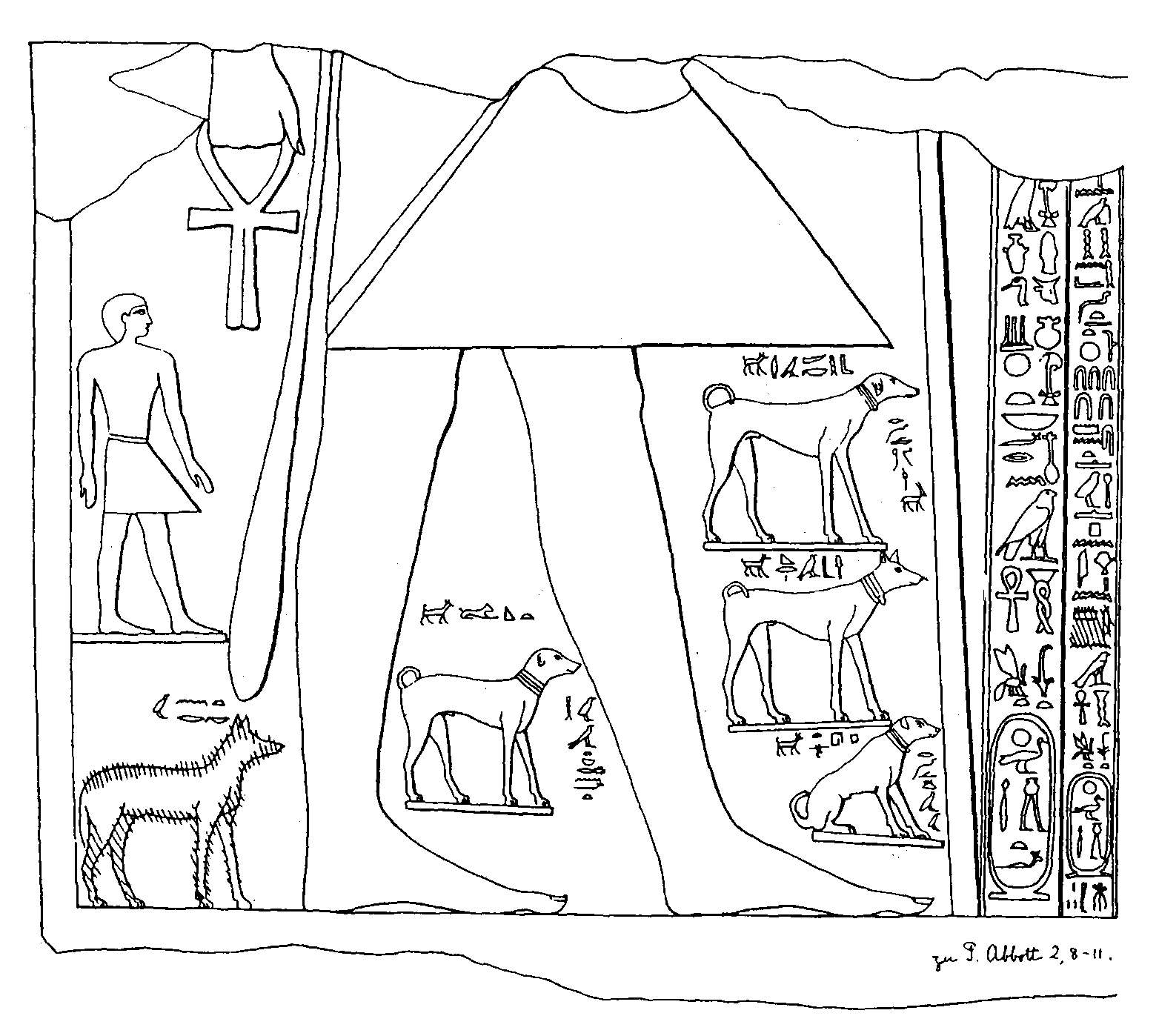|
The Canaan belongs to the few still existing dog breeds of the primitive type. They are, on average, a bit bigger than the jackal, a medium sized dog. The males are also usually bigger than the females. Their head resembles the head of the wild dog, – shaped like a wedge, with very movable, relatively short and broad ears and dark, intelligent, almond shaped eyes and a black nose. The body is rectangular and its bushy tail is carried over its back. The Canaan is a fast moving and powerful breed. The coat is of medium length and very thick, to help protect against the harsh desert climate. Its fur is usually: sand, golden to red-brown, white, black, black and white, as well as brown and white. This helps it blend into the desert. Grey, brindle and tricolour are unwanted.
The Canaans belong to the Pariah-dogs, which are typical to the African-Asian area. They live near human settlements and are tolerated by humans, however, they are not supported or fed. They are helpful to tribal peoples because they consume any organic garbage. Canaans can still be found in packs in the desert today. When bedouins need a dog to guard the camp or to watch over the sheep they look for a wild bitch, which raises its puppies in a cave. From time to time they give her food until they have found the fittest male puppy, that will guard their camp in the future.
Kynologicaly the pariah dogs belong to the family of Pomeranian dogs, which are the oldest family of dogs in the world. Cave paintings from several thousand years have been found which depict such dogs in use as hunting dogs. Overtime the archetype of the Pomeranian adapted to its environment. The Canaan dog is descendant of the Spitz type, found in the region of modern day Israel. Because it evolved by natural selection, only the strongest and most intelligent individuals of its species survived and reproduced, the ones fit enough for the harsh desert life. The Canaans still have strong survival instincts, which make them intelligent and independent, as well as very cautious.
 
Drawings of dogs in the Rock-Tomb of Chum-hotep II; "Mayor of Menat Chufu" and "district prince of the east desert" at Beni Hassan in Egypt
Rudolphina Menzel, an ethnologist for dogs and cytologist, who emigrated from Vienna to Palestine in the thirties, back domesticated the Canaan breed from wild living Pariah dogs. When Hagana asked her to train dogs for the army, she at first decided to use breeds, which she already knew from Europe, for this purpose. However, very soon she realized that these breeds have large difficulties with the harsh climate. She observed the native dogs, which seemed to be able to deal with the harsh climate very well. She found them in the desert as well as with the Bedouins and the Druses being used as protectors for sheep and camps. She took some of them home and was surprised how easily she could domesticate and train them. They were full of life and affectionate. Prof. Menzel named them Canaan dogs after the biblical country Canaan. She worked very hard to get them to be recognized as an official breed of dog.

Old map of the country Canaan
  
It shows a detail of the coffin of general Sepa (commander-in-chief of the army of the 15th Upper Egyptian district), with his dog

Reconstructed picture of the dog stele from the Saff-Tomb of el-Tarif of Pharaoh Antef II. Wahanch (ruler of the Upper Egyptian districts 1 to 7 and the area around Abydos), it shows the ruler accompanied by 5 dogs with Libyan names
Common Characteristics of the Canaan Dog – Please, have a look at the website of Myrna Shiboleth. She is not only a breeder of Canaan’s in Israel but the highest authority on them. She knows better than anyone else how a Canaan looks and behaves. On her website go to the section named “The Standard” for to find everything you want to know.
|